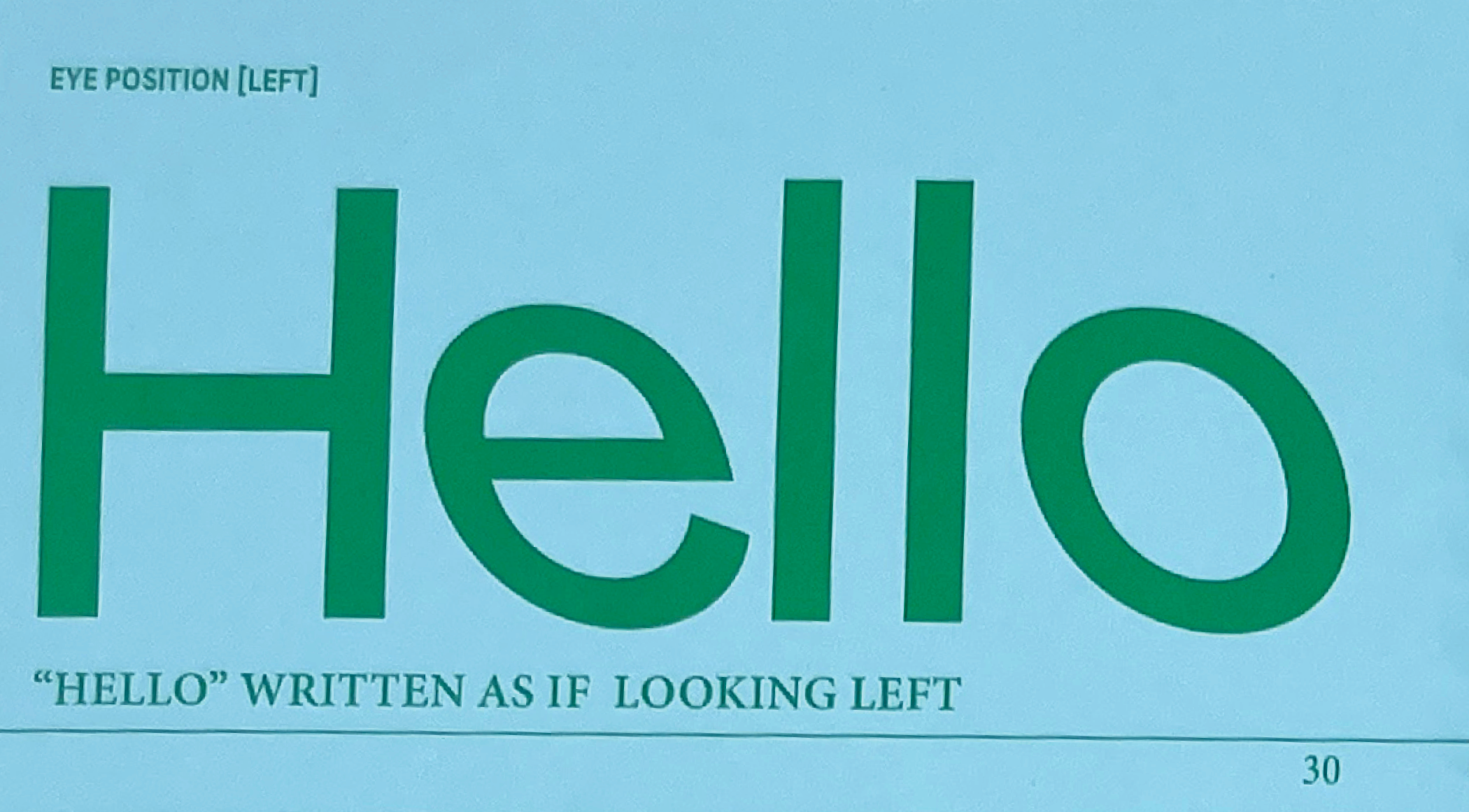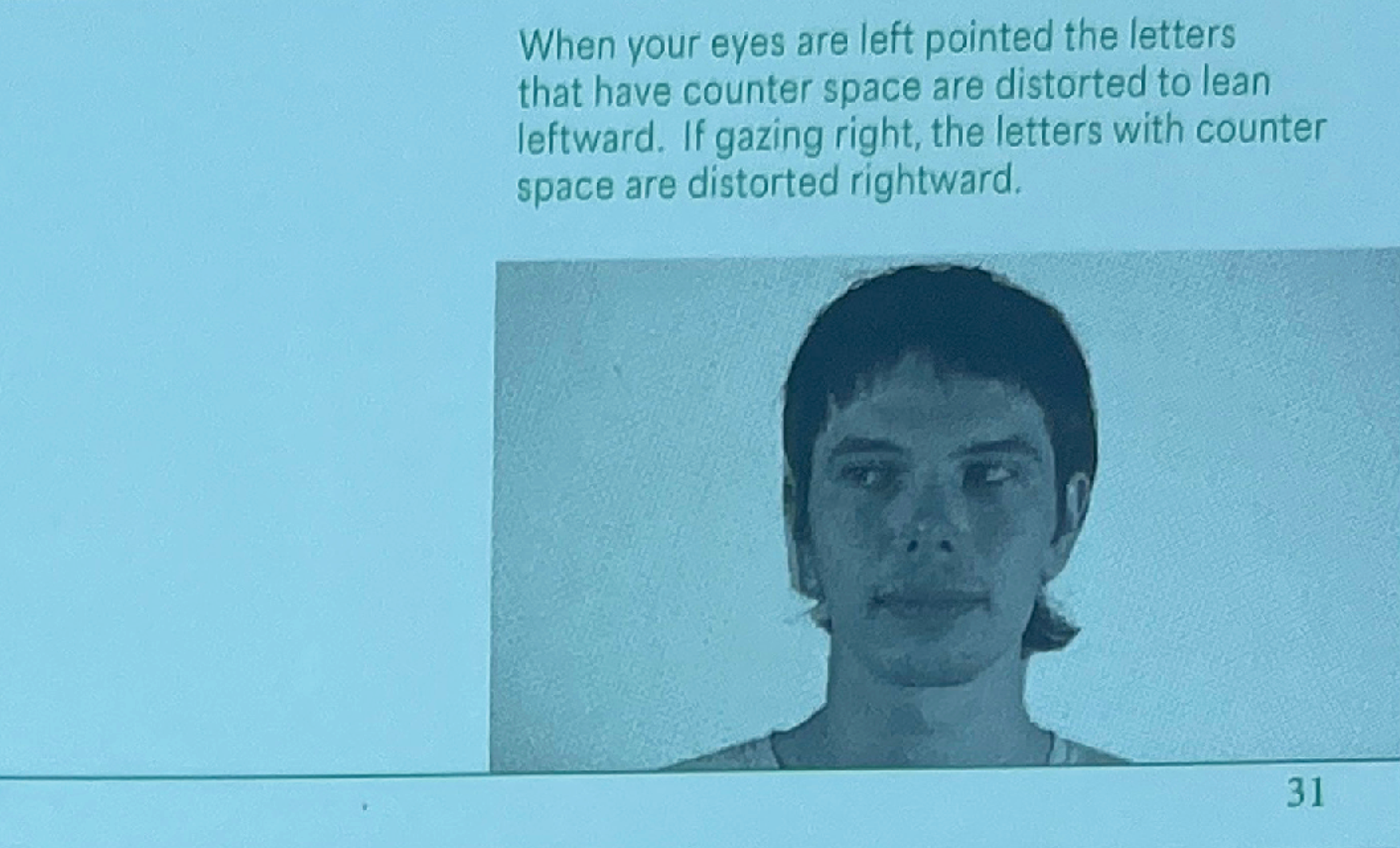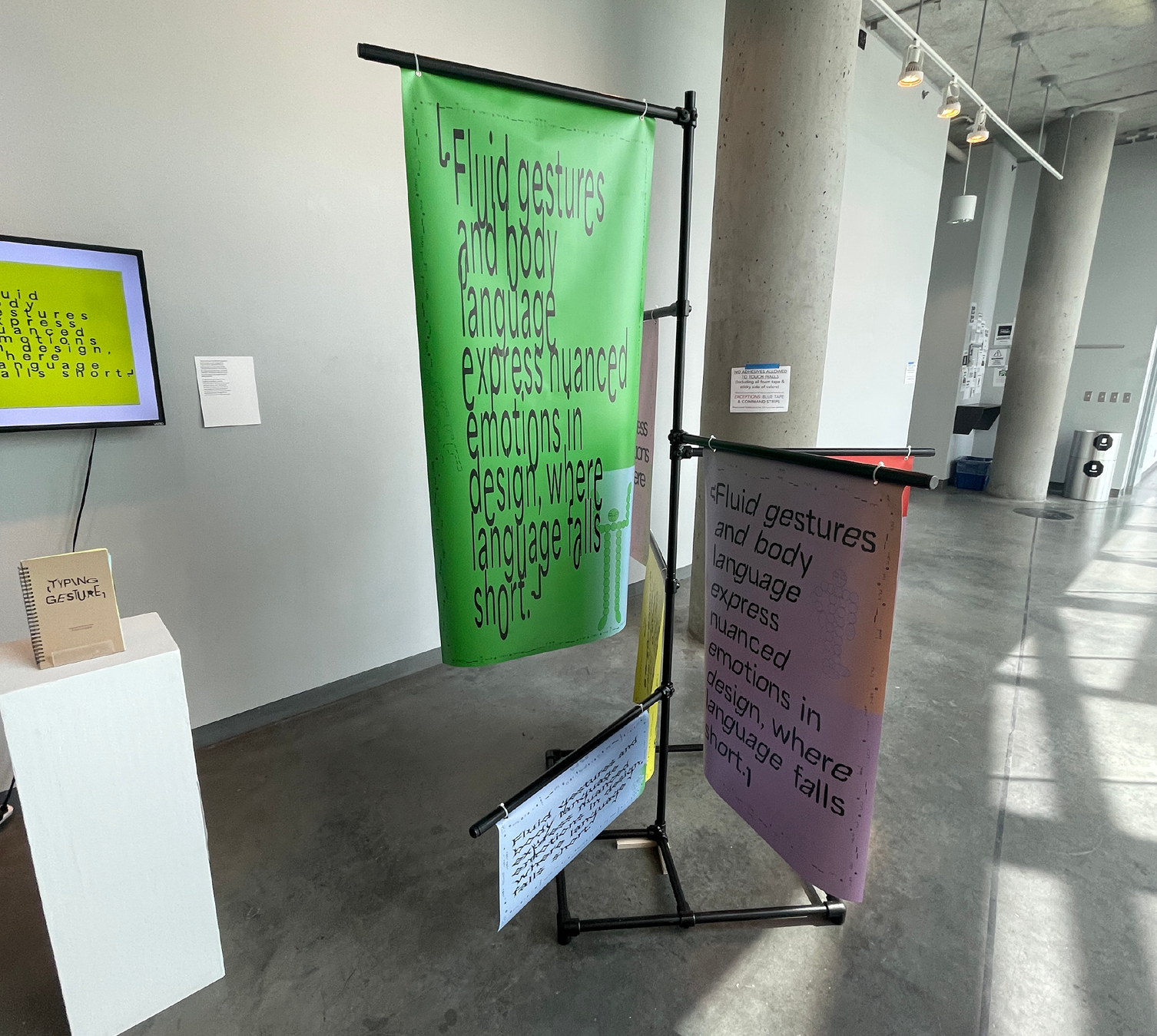Typing Gesture
Time — 2022
Type — Code, Publication, Videography, Posters
Team — Sasha Danandeh, Jesse Foster, Wesley Walker

01. Background
Typing Gesture is my research project that delves into the intriguing intersection of body language and digital writing systems.
During the process of selecting a thesis topic, my curiosity led me towards exploring unique writing systems, such as signwriting and physical language systems like flag semaphores. These expressive forms of communication captivated my interest, and I sought to uncover their potential implications for the evolution of language.
In an era where artificial intelligence dominates the forefront of technology, I questioned how language could transcend its traditional boundaries. With the vast array of tools at our disposal today, why should we confine ourselves to the rigid constraints of conventional typefaces? The answer lies in the future of digital calligraphy, where the expressive beauty of physical forms coalesces with the seamless capabilities of digital platforms.
During the process of selecting a thesis topic, my curiosity led me towards exploring unique writing systems, such as signwriting and physical language systems like flag semaphores. These expressive forms of communication captivated my interest, and I sought to uncover their potential implications for the evolution of language.
In an era where artificial intelligence dominates the forefront of technology, I questioned how language could transcend its traditional boundaries. With the vast array of tools at our disposal today, why should we confine ourselves to the rigid constraints of conventional typefaces? The answer lies in the future of digital calligraphy, where the expressive beauty of physical forms coalesces with the seamless capabilities of digital platforms.



02. Research
During the initial phase of research, I immersed myself in a multitude of Google Docs, meticulously jotting down notes and occasionally scanning physical pages of notes for further exploration. My quest began with an in-depth study of existing language examples that intricately intertwined physicality into their essence.
The second phase entailed delving into the realm of GitHub pages, where I embarked on a fascinating journey to understand the workings of Posenet and TensorFlow. Armed with this knowledge, I ventured into the realm of body tracking.
The second phase entailed delving into the realm of GitHub pages, where I embarked on a fascinating journey to understand the workings of Posenet and TensorFlow. Armed with this knowledge, I ventured into the realm of body tracking.


03. Process
After a semester of intensive research, the challenge of presenting my findings loomed ahead. The culmination of my efforts materialized into a motion graphic showcasing the transformation of a single sentence through various poses—the crossing of a leg, the closing of eyes, and more.
In addition, I created posters displayed on a sculptural stand. Each poster, resembling a pose, brought a new dimension to typography by inviting the audience to interact actively.
Viewers immersed themselves in the pose, which in turn facilitated the reading of the displayed poster.
To ensure a comprehensive understanding of the project, I designed a key book, which intricately explained how different body language positions transitioned into typography. With facial expressions influencing the contours of the type, while gestures like raised arms became additional glyphs, and legs connected to the tracking and leading of the text.
In addition, I created posters displayed on a sculptural stand. Each poster, resembling a pose, brought a new dimension to typography by inviting the audience to interact actively.
Viewers immersed themselves in the pose, which in turn facilitated the reading of the displayed poster.
To ensure a comprehensive understanding of the project, I designed a key book, which intricately explained how different body language positions transitioned into typography. With facial expressions influencing the contours of the type, while gestures like raised arms became additional glyphs, and legs connected to the tracking and leading of the text.





04 Conclusion
Typing Gesture holds a special place in my heart as my creative endeavor, where I learned to distinguish the research process from the final presentation.
Throughout this journey, my profound appreciation stems from its ability to challenge the very boundaries of traditional typography. It urges us to break free from historical limitations and embrace new technologies and futuristic ideas to craft captivating and innovative designs.
This project has taught me a valuable lesson: design is a dynamic and ever-evolving realm. As technologies progress, so does the art of design, constantly pushing the boundaries and venturing into uncharted territories. Embracing this continuous change is a beautiful aspect of the creative process, paving the way for exciting possibilities and infinite opportunities for artistic
expression.
Throughout this journey, my profound appreciation stems from its ability to challenge the very boundaries of traditional typography. It urges us to break free from historical limitations and embrace new technologies and futuristic ideas to craft captivating and innovative designs.
This project has taught me a valuable lesson: design is a dynamic and ever-evolving realm. As technologies progress, so does the art of design, constantly pushing the boundaries and venturing into uncharted territories. Embracing this continuous change is a beautiful aspect of the creative process, paving the way for exciting possibilities and infinite opportunities for artistic
expression.
Typing Gesture
Time — 2022
Type — Code, Publication, Videography, Posters
Team — Sasha Danandeh, Jesse Foster, Wesley Walker

01. Background
Typing Gesture is my research project that delves into the intriguing intersection of body language and digital writing systems.
During the process of selecting a thesis topic, my curiosity led me towards exploring unique writing systems, such as signwriting and physical language systems like flag semaphores. These expressive forms of communication captivated my interest, and I sought to uncover their potential implications for the evolution of language.
In an era where artificial intelligence dominates the forefront of technology, I questioned how language could transcend its traditional boundaries. With the vast array of tools at our disposal today, why should we confine ourselves to the rigid constraints of conventional typefaces? The answer lies in the future of digital calligraphy, where the expressive beauty of physical forms coalesces with the seamless capabilities of digital platforms.
During the process of selecting a thesis topic, my curiosity led me towards exploring unique writing systems, such as signwriting and physical language systems like flag semaphores. These expressive forms of communication captivated my interest, and I sought to uncover their potential implications for the evolution of language.
In an era where artificial intelligence dominates the forefront of technology, I questioned how language could transcend its traditional boundaries. With the vast array of tools at our disposal today, why should we confine ourselves to the rigid constraints of conventional typefaces? The answer lies in the future of digital calligraphy, where the expressive beauty of physical forms coalesces with the seamless capabilities of digital platforms.









